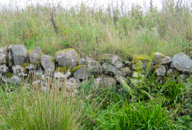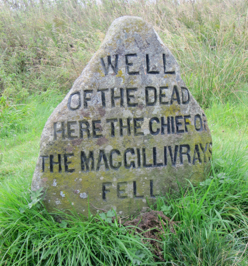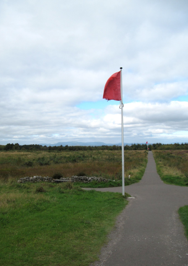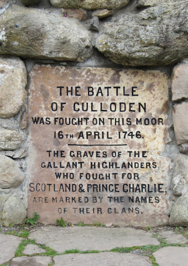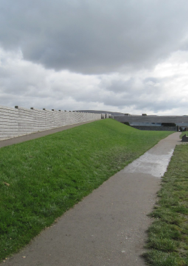Culloden Battlefield
Culloden Moor, inverness-shire
The highlands
Scotland, United Kingdom
british isles
September 25, 2010


Culloden Battlefield
Culloden Moor, inverness-shire
The highlands
Scotland, United Kingdom
british isles
September 25, 2010




The Cullodon Moor is the site of the last battle fought on British soil. Because of the wrenching political situation involving some of the Scottish clans, the horrible massacre of the Scottish troops during this horrendous battle, and the rape, slaughter and destruction of Jacobites and their property by the Government troops afterwards, Culloden Battlefield has been a place of pilgrimage, especially those of Scottish ancestry. The former siting of the visitor’s center on the Goverment’s third line, caused further ill-will since the story was therefore told primarily from the British perspective. In December, 2007, the National Trust for Scotland re-opened the site, using archaeological and historical research to return the battlefield, as close as possible, to the state as could be known existed on April 16, 1746. When Henry and I visited, we were impressed by many careful and considerate presentations, beginning with the design and placement of the new visitor’s center itself. Standing in a far corner of the property, the low gray building, with ramp and berms, is practically concealed from view, though its roof offers an elevated place from which to view the entire landscape and the battlefield itself. The large and thorough exhibition housed within the center provides thorough documentation of all the facts known about the Battle of Culloden, including the political buildup to this date, and all the details about the battle, weaponry, weather and conditions, etc. that impacted the outcome. State-of-the-art technology has been used to bring the battle to life in various forms. Especially gripping to both Henry and me, was a screening room where the battle was presented on wall-sized screens surrounding us and other viewers who stood in the center. The three different films depicted the hand-to-hand battle between the two sides as described by the survivors. Finally, each visitor to the site was provided with hand-held audio guides containing location transmitters. As we walked along the trails throughout the battlefield marked with red and blue flags indicating the positions of the Jacobites and the Government troops, the landscape and topography embellished the story of this wasteful battle. Descriptions of the battle and voices from the past described the events. Monuments to the dead, and mass graves indicating the fallen of many Scottish clans were marked by engraved stones. A cairn commemorating the dead was placed in the care of the Scottish National Trust by Hector Culloden in 1946. It was erected in 1881 by his kinsman, Duncan Forbes Culloden, who owned the property.
PHOTOS: Left Column: 1. & 2. Views across the battlefield. 3. Headstone marking the burial ground of the English soldiers who died in the Battle of Culloden. 4. Pushing up daisies, these flowers were found at the base of the cairn. 5. View of the topography where the hand-to-hand battle was fought. The thick heather, bogs, and wet conditions made it all the more difficult for the Scottish troops to fight, carrying both muskets and swords through this rough terrain. 6. The old stone house which stands on the battlefield. It is thought that the Government troops used this as a hospital for their wounded the day of the battle. Center, Top: The cain erected by Duncan Forbes Culloden in 1881. It honors the “Gallant Highlanders who fought with Bonnie Prince Charles on April 16, 1746. Center, Middle: The stone marking the burial ground of the Donald clan. Center, Bottom: A well stood on the spot where the first clan chief to fall in the Battle of Culloden died. This stone marks the spot of the Chief of the Macgillivrays Clan. Right Column: 1. Crossroads of paths which lead the visitors throughout the battlefield. The red flags indicated the position of the Government troops. 2. Engraving on the cain honoring the fallen Scottish Highlanders. 3. A view of the new Visitor’s Center, opened in December, 2007.


Respectful War Grave




